Research Area D - Publications 2010
25-Dec-2010

Posttranslational histone modifications play an important role in modulating gene expression and chro- matin structure. Here we report the identification of histone H3K79 dimethylation in the simple eukary- ote Dictyostelium discoideum. We have deleted the D. discoideum Dot1/KMT4 homologue and demonstrate that it is the sole enzyme responsible for histone ...
01-Dec-2010
Journal of Immunotherapy, online article

RNA oligonucleotides have emerged as a new class of biologicals that can silence gene expression but also stimulate immune responses through specific pattern-recognition receptors. The development of effective delivery systems remains a major challenge for the therapeutic application of the RNA oligonucleotides. In this study, we have established a novel ...
23-Nov-2010

Histone modifications play an important role in the formation of an epigenetic memory system that maintains cellular identity. Their complex patterns have been suggested to constitute a histone code, which encodes for specific forms of chromatin. According to the histone code hypothesis these specific patterns are passed on from one cell generation to the next. ...
01-Nov-2010
TIBS, online article

Most multi-cellular organisms adopt a specific gene expression pattern during cellular differentiation. Once established, this pattern is frequently maintained over several cell divisions despite the fact that the initiating signal is no longer present. Differential packaging into chromatin is one such mechanism that allows fixation of transcriptional activity. ...
15-Oct-2010
iGEM 2010 CIPSM LMU team

We thank the CIPSM iGEM team members and Kirsten Jung and wish them good luck at this years competition! The International Genetically Engineered Machine competition (iGEM) is the premiere undergraduate Synthetic Biology competition. The iGEM team LMU-Munich works on the project: "Production of azobenzene derivates in Escherichia coli and selection of successful ...
20-Sep-2010

Nucleosome remodelling is an essential principle to assure that the packaging of eukaryotic genomes in chromatin remains flexible and adaptable to regulatory needs. Nucleosome remodelling enzymes spend the energy of ATP to alter histone–DNA interactions, to catalyse nucleosome displacement and reassembly, on histone exchange and on the relocation of histone ...
15-Sep-2010
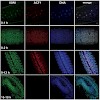
The nucleosome remodelling complexes CHRAC and ACF of Drosophila are thought to play global roles in chromatin assembly and nucleosome dynamics. Disruption of the gene encoding the common ACF1 subunit compromises fly viability. Survivors show defects in chromatin assembly and chromatin-mediated gene repression at all developmental stages. We now show that ACF1 ...
Identification and characterization of two novel primate-specific histone H3 variants, H3.X and H3.Y
06-Sep-2010
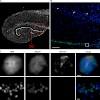
Nucleosomal incorporation of specialized histone variants is an important mechanism to generate different functional chromatin states. Here, we describe the identification and characterization of two novel primate-specific histone H3 variants, H3.X and H3.Y. Their messenger RNAs are found in certain human cell lines, in addition to several normal and malignant ...
29-Aug-2010
Nature Structural & Molecular Biology, online article
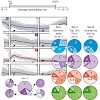
Sequential modifications of the RNA polymerase II (Pol II) C-terminal domain (CTD) coordinate the stage-specific association and release of cellular machines during transcription. Here we examine the genome-wide distributions of the 'early' (phospho-Ser5 (Ser5-P)), 'mid' (Ser7-P) and 'late' (Ser2-P) CTD marks. We identify gene class–specific patterns and find ...
26-Aug-2010
Genome Biology, 2010, 8, doi:10.1186/gb-2010-11-8-216 published on 26.08.2010
Genome Biology, online article

Diploid genomes are exquisitely balanced systems of gene expression. The dosage-compensation systems that evolved along with monosomic sex chromosomes exemplify the intricacies of compensating for differences in gene copy number by transcriptional regulation.
15-Aug-2010
The Journal of Immunology, online article
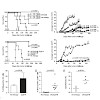
In stomach cancer, there is a need for new therapeutic strategies, in particular for the treatment of unresectable tumors and micrometastases. We investigated the efficacy of immunotherapy in an autochthonous model of gastric cancer, the CEA424-SV40 T Ag (TAg) transgenic mice. Treatment efficacy against both the autochthonous tumors and s.c. tumors induced by the ...
21-Jul-2010
Nucleic Acids Research, online article

The recent discovery of genomic 5-hydroxymethylcytosine (hmC) and mutations affecting the respective Tet hydroxylases in leukemia raises fundamental questions about this epigenetic modification. We present a sensitive method for fast quantification of genomic hmC based on specific transfer of radiolabeled glucose to hmC by a purified glucosyltransferase. We ...
20-Jul-2010
BioEssays, 2010, Volume 32, Issue 8, pages 709–717, August 2010, DOI: 10.1002/bies.201000029 published on 20.07.2010
BioEssays, online article
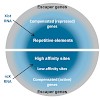
Does the three-dimensional (3D) conformation of interphase chromosomes merely reflect their function or does it actively contribute to gene regulation? The analysis of sex chromosomes that are subject to chromosome-wide dosage compensation processes promises new insight into this question. Chromosome conformations ar dynamic and largely determined by association ...
19-Jul-2010

For centuries, cell biology has been based on light microscopy and at the same time been limited by its optical resolution. However, several new technologies have been developed recently that bypass this limit. These new super-resolution technologies are either based on tailored illumination, nonlinear fluorophore responses, or the precise localization of single ...
01-Jul-2010

Nucleosome remodelling factors are regulators of DNA accessibility in chromatin and lubricators of all major functions of eukaryotic genomes. Their action is transient and reversible, yet can be decisive for irreversible cell-fate decisions during development. In addition to the well-known local actions of nucleosome remodelling factors during transcription ...
25-Jun-2010

The H4K16 acetyltransferase MOF plays a crucial role in dosage compensation in Drosophila but has additional, global functions. We compared the molecular context and effect of MOF in male and female flies, combining chromosome-wide mapping and transcriptome studies with analyses of defined reporter loci in transgenic flies. MOF distributes dynamically between two ...
10-Jun-2010
Experimental Cell Research, online article
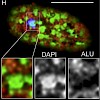
Extensive changes of higher order chromatin arrangements can be observed during prometaphase, terminal cell differentiation and cellular senescence. Experimental systems where major reorganization of nuclear architecture can be induced under defined conditions, may help to better understand the functional implications of such changes. Here, we report on profound ...
05-May-2010
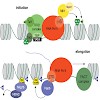
Epigenetic mechanisms contribute to the establishment and maintenance of cell-type-specific gene expression patterns. In this review, we focus on the functions of histone lysine methylation in the context of epigenetic gene regulation during developmental transitions. Over the past few years, analysis of histone lysine methylation in active and repressive nuclear ...
03-May-2010
Bayer Schering Pharma

We thank Kirsten Jung for heading the CIPSM Excursion to Bayer Schering Pharma as part of our graduate education series! We heard it was a great time and will enlightingly continue with a follow up excursion.
01-May-2010

Since its first description more than 30 years ago p53 has become a paradigm for a protein with versatile functions. P53 sensitizes a large variety of genetic alterations and has been entitled the guardian of the genome. Stabilization of p53 upon DNA damage is accompanied by a complex pattern of modifications, which ascertain the cellular response either in the ...
07-Apr-2010
Analytical and Bioanalytical Chemistry, 2010, doi: 10.1007/s00216-010-3657-0, 397(8): 3203–3208. published on 07.04.2010
Analytical and Bioanalytical Chemistry, online article

The understanding of cellular processes and their pathophysiological alterations requires comprehensive data on the abundance, distribution, modification, and interaction of all cellular components. On the one hand, artificially introduced fluorescent fusion proteins provide information about their distribution and dynamics in living cells but not about ...
06-Apr-2010
PLOSone, online article

The histone methyltransferase SU(VAR)3–9 plays an important role in the formation of heterochromatin within the eukaryotic nucleus. Several studies have shown that the formation of condensed chromatin is highly regulated during development, suggesting that SU(VAR)3–9’s activity is regulated as well. However, no mechanism by which this may be achieved has been ...
01-Apr-2010
J. Appl. Physiol., 2010, doi: 10.1152/japplphysiol.00053.2010 published on 01.04.2010
Journal of Applied Physiology, online article

Heterochromatin is a repressive chromatin state which is characterized by densely packed DNA and low transcriptional activity. Heterochromatin-induced gene silencing is important for mediating developmental transitions, and in addition, it has more global functions in ensuring chromosome segregation and genomic integrity. Here we discuss how altered ...
23-Mar-2010
Analytical Chemistry, online article
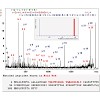
The primary structure of a 13.6 kDa single heavy chain camelid antibody (VHH) was determined by matrix-assisted laser desorption ionization-time-of-flight/time-of-flight (MALDI-TOF/TOF) top-down sequence analysis. The majority of the sequence was obtained by mass spectrometric de novo sequencing, with the N-terminal 14 amino acid residues being determined using ...
14-Mar-2010

Demethylation at distinct lysine residues in histone H3 by lysinespecific demethylase 1 (LSD1) causes either gene repression or activation1,2. As a component of co-repressor complexes, LSD1 contributes to target gene repression by removing mono- and dimethyl marks from lysine 4 of histone H3 (H3K4)1,3. In contrast, during androgen receptor (AR)-activated gene ...
12-Mar-2010

To restore chromatin on new DNA during replication, recycling of histones evicted ahead of the fork is combined with new histone deposition. The Asf1 histone chaperone, which buffers excess histones under stress, is a key player in this process. Yet how histones handled by human Asf1 are modified remains unclear. Here we identify marks on histones H3-H4 bound to ...
16-Feb-2010
The Journal of Biological Chemistry, online article
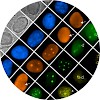
Drugs for cancer therapy belong to different categories of chemical substances. The cellular targets for the therapeutic efficacy are often not unambiguously identified. Here, we describe the process of ribosome biogenesis as a target of a large variety of chemotherapeutic drugs. We determined the inhibitory concentration of 36 chemotherapeutic drugs for ...
20-Jan-2010
FEMS Microbiology Letters, online article

The KdpD/KdpE two-component system of Escherichia coli activates the expression of the kdpFABC operon encoding the high-affinity K+ uptake system KdpFABC in response to K+ limitation or salt stress. Earlier, it was proposed that the histidine kinase KdpD is a turgor sensor; recent studies suggest that KdpD integrates three chemical stimuli from the cytoplasm. ...
20-Jan-2010
The Journal of Immunology, 2009, 182, 6044-50 published on 20.01.2010
The Journal of Immunology, online article

In the course of infection, the detection of pathogen-associated molecular patterns by specialized pattern recognition receptors in the host leads to activation of the innate immune system. Whereas the subsequent induction of adaptive immune responses in secondary lymphoid organs is well described, little is known about the effects of pathogen-associated ...
15-Jan-2010
The Journal of Immunology, online article
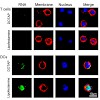
The role of immune suppression by regulatory T (Treg) cells in the maintenance of immune homeostasis is well established. However, little is known about how Treg cell function is inhibited on viral infection to allow the development of a protective immune response. As viral RNA is a crucial mediator for activation of antiviral immunity, we examined the effects of ...
12-Jan-2010
Nucleic Acids Resarch, 2010, doi: 10.1093/nar/gkq026, 13 published on 12.01.2010
Nucleic Acids Research, online article
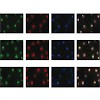
Dosage compensation in Drosophila melanogaster involves the selective targeting of the male X chromosome by the dosage compensation complex (DCC) and the coordinate, 2-fold activation of most genes. The principles that allow the DCC to distinguish the X chromosome from the autosomes are not understood. Targeting presumably involves DNA sequence elements whose ...
07-Jan-2010
The Journal of Biological Chemistry, online article
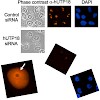
The p53 tumor suppressor pathway is activated by defective ribosome synthesis. Ribosomal proteins are released from the nucleolus and block Hdm2 that targets p53 for degradation. However, it remained elusive how abrogation of individual rRNA processing pathways contributes to p53 stabilization. Here we show that selective inhibition of 18S rRNA processing ...
01-Jan-2010
The Journal of Biological Chemistry, online article

The largest subunit of RNA polymerase II (RNAPII) C-terminal heptarepeat domain (CTD) is subject to phosphorylation during initiation and elongation of transcription by RNA polymerase II. Here we study the molecular mechanisms leading to phosphorylation of Ser-7 in the human enzyme. Ser-7 becomes phosphorylated before initiation of transcription at promoter ...










